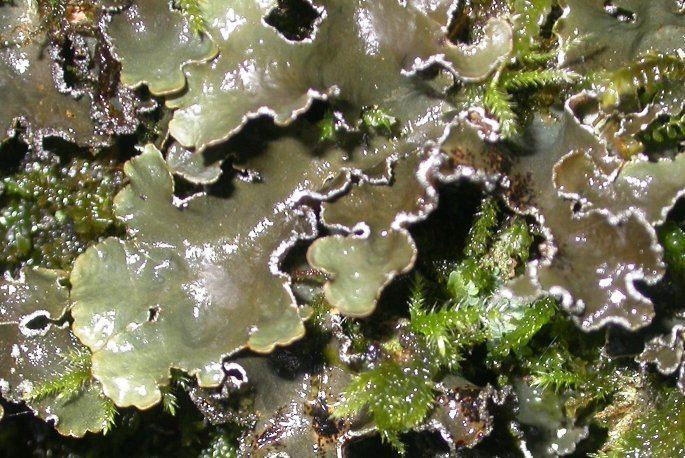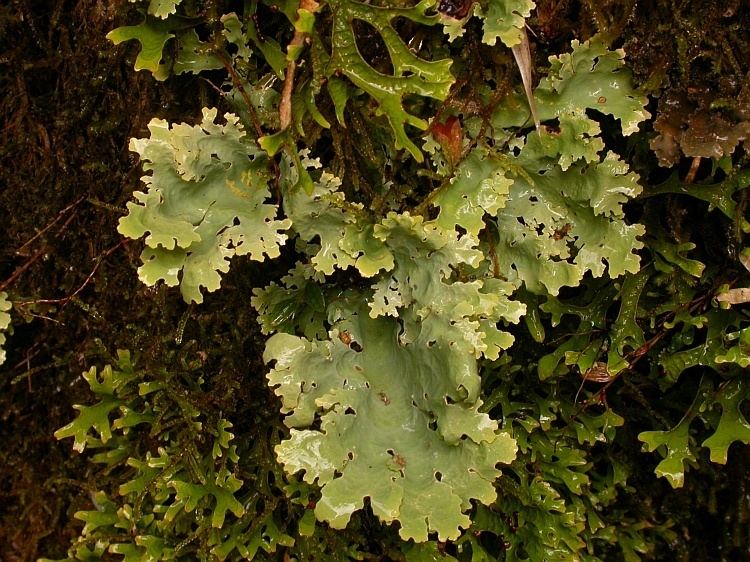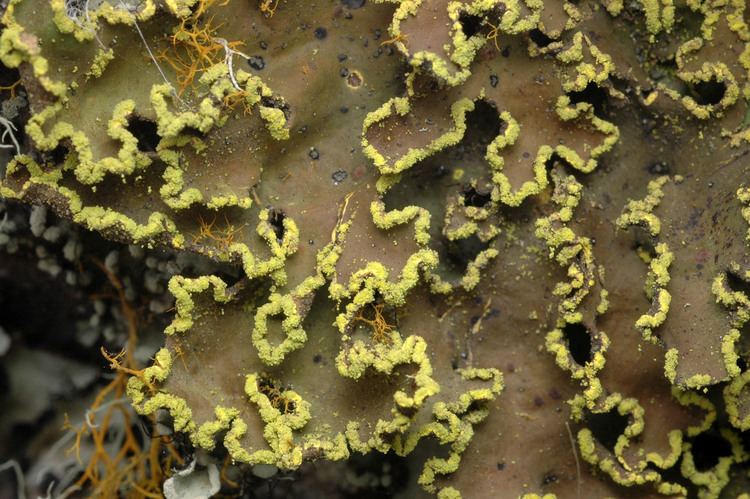Kingdom Fungi Scientific name Pseudocyphellaria Rank Genus | Family Lobariaceae Higher classification Lobariaceae | |
 | ||
Similar Sticta, Lobariaceae, Lobaria, Nephroma, Pannaria | ||
Pseudocyphellaria fungi kingdom
Pseudocyphellaria is a genus of large, leafy lichens that are sometimes referred to as "specklebelly" lichens. The genus has a widespread distribution, especially in south temperate regions, and contains about 170 species. They resemble Lobaria, except that all species of Pseudocyphellaria have conspicuous pseudocyphellae on their lower surface, a characteristic that is unique to this genus. Some species contain pulvinic acid-related pigments; in these species the soredia and pseudocyphellae can be bright yellow.
Contents
- Pseudocyphellaria fungi kingdom
- Pseudocyphellaria crocata fungi kingdom
- The Pseudocyphellaria symbiosis
- Ecological significance
- Traditional use by humans
- References

Pseudocyphellaria crocata fungi kingdom
The Pseudocyphellaria symbiosis

Many species of Pseudocyphellaria are cyanolichens and contain the cyanobacterium Nostoc as a photobiont, which allows nitrogen fixation. In some species of Pseudocyphellaria the cyanobacterium is the sole photobiont, while other species also contain the green alga Dictyochloropsis and restrict the cyanobacterium to warty cephalodia on the lower surface of the lichen.

Some species of Pseudocyphellaria appear to be able to use either a cyanobacterium or a green algae as their photobiont. DNA tests have shown that the fungal symbionts in P. murrayi (which is in a symbiosis with a cyanobacterium) and P. rufovirescens (which is in a symbiosis with a green alga) are actually the same species. This means that P. murrayi-P. rufovirescens is actually one species of fungus that is capable of forming two very different lichens, one with a cyanobacterium and one with a green alga. Two other possible pairs of Pseudocellaria species that may be capable of choosing their photobiont are P. knightii-P. lividofusca, and P. kookeri-P. durietzii.
Ecological significance

Most Pseudocyphellaria grow on trees in coastal areas, from the subtropics to the boreal zones, although some species can occasionally be found growing on mossy rocks or growing inland. Many species of Pseudocyphellaria are restricted to old-growth forests in humid areas, and are therefore threatened by logging. The limited light conditions of dense young forests can severely decrease the growth of Pseudocyphellaria crocata compared to more open, old-growth forests, and the excess of light from clearcuts can also cause damage to the lichen. Because they are often restricted to humid forests in undisturbed areas, species of Pseudocyphellaria are often used as indicators of valuable old growth forests.

Pseudocyphellaria rainierensis is listed as vulnerable in Canada by COSEWIC. Pseudocyphellaria crocata has disappeared from much of Scandinavia, a development that has been partly attributed to an increase in grazing from snails, presumably as a result of global warming. In the areas of Scandinavia where P. crocata is still found, it seems restricted to growing on smaller twigs that are harder for the snails to reach.
Traditional use by humans

Several species of Pseudocyphellaria can be utilized to produce a brown to orange-brown dye, and some of them have been used to dye wool in Britain and Scandinavia. One species of Pseudocyphellaria is used in Madagascar to make a tea used to treat indigestion.
Warning: Besides being yellow, pulvinic acid derivatives are highly toxic. Any species of Pseudocyphellaria that has yellow structures probably contains one of these compounds, and may be toxic if ingested.
